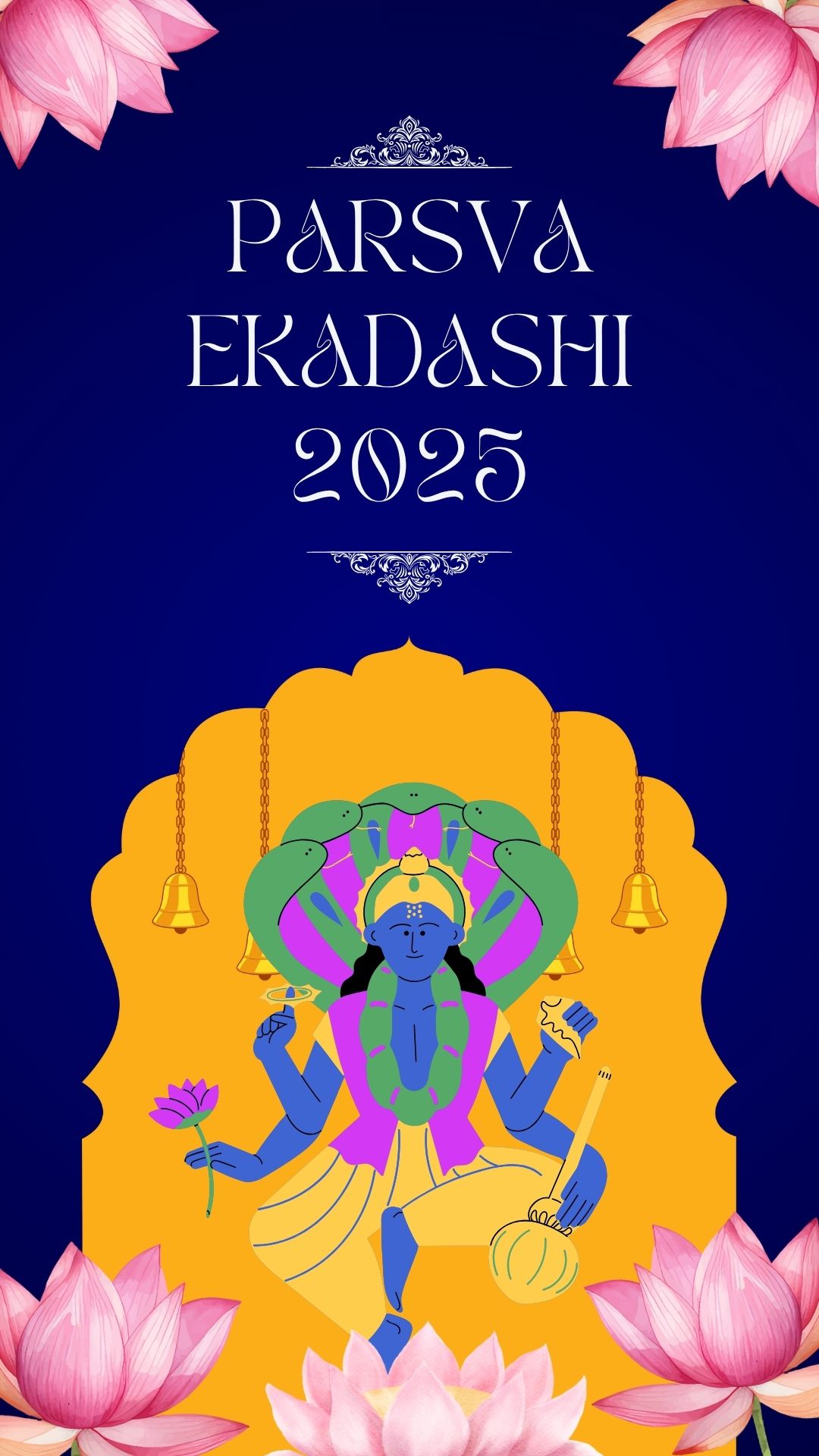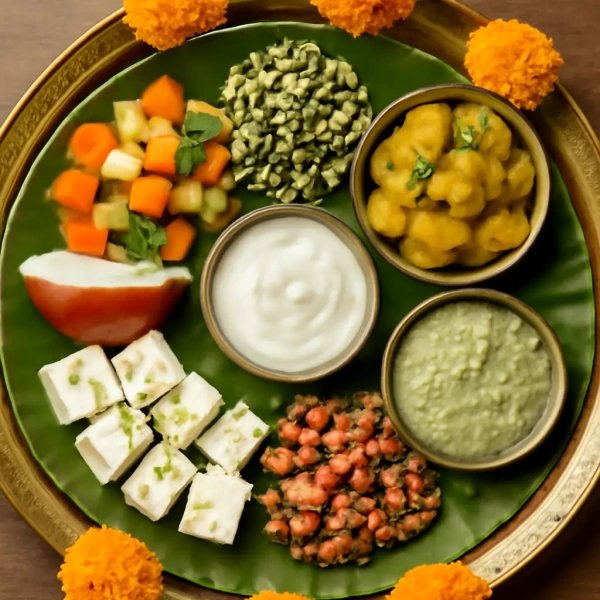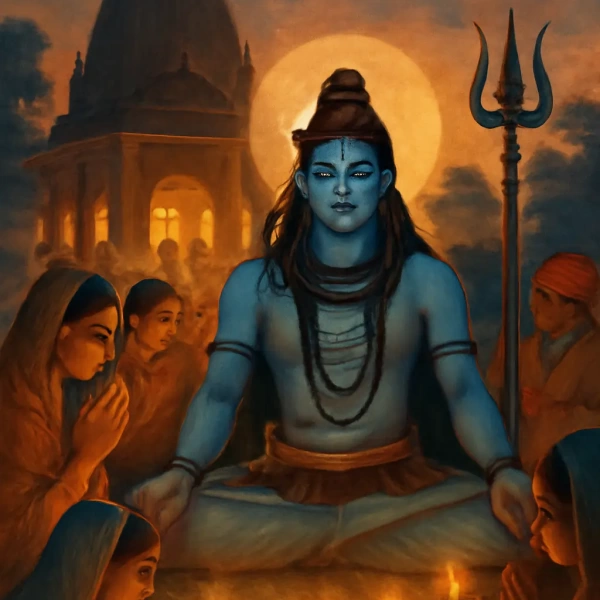Papankusha Ekadashi in 2025 is a spiritually significant day observed for cleansing sins and attaining freedom from worldly cycles. It will be celebrated on October 3, 2025, and is closely linked with Rama Ekadashi and Sharad Purnima in the Hindu calendar.
Also read- Festival in October 2025: Complete List of Hindu Festivals
Introduction
Papankusha Ekadashi holds a special place in Sanatan Dharma. Falling in the Shukla Paksha of Ashwin month, right after Dussehra and ahead of Sharad Purnima, it acts as a spiritual bridge between major religious observances. This Ekadashi is dedicated to Lord Vishnu, famed for his role as the sustainer and purifier of the universe.
Papankusha Ekadashi 2025: Date and Parana Timing
- Date: Friday, 3rd October 2025
- Ekadashi Tithi Begins: 2nd October, 7:10 PM
- Ekadashi Tithi Ends: 3rd October, 6:34-6:49 PM
- Parana (Breaking the fast): 4th October, 6:05-8:37 AM IST
Always check local sunrise for exact Parana timing and perform charity or Brahmin feeding prior to breaking the fast.
Spiritual Significance
- Papankusha combines ‘Paap’ (sin) and ‘Ankusha’ (restraint), symbolizing the control and eradication of sins through disciplined spiritual practice.
- The vrat is believed to destroy past and present sins, elevate spiritual merit, and prepare one’s soul for moksha—the ultimate liberation.
- Observing this Ekadashi grants blessings equivalent to performing great yajnas such as Ashvamedha and Surya Yagna.
- The vrat frees one from fears, negative karma, and cycles of rebirth, benefitting even departed ancestors when followed with Pitru Tarpan.
- Meditation, charity, and rituals performed today multiply the spiritual merit and are considered highly auspicious.
Papankusha Ekadashi Vrat Katha
The story from Padma Purana about Papankusha Ekadashi highlights its power in granting redemption. A once-sinful hunter named Krodhan transforms spiritually by observing this vrat, ultimately achieving liberation through Vishnu’s grace. The katha stresses the value of even a single day’s devotion in redeeming lifelong sins.
Rituals and Parana Vidhi
Ekadashi Puja Vidhi
- Preparation (Dashami):
- Sankalp (Vow):
- Worship:
- Charity and Bhajan:
- Parana (Breaking the Fast):
Connection to Rama Ekadashi and Sharad Purnima
- Rama Ekadashi: Occurs later in Ashwin month, dedicated to Lord Vishnu (Rama avatar). Both Ekadashis focus on removing sins and elevating the devotee’s spiritual status. Papankusha acts as a preparatory phase leading to the more intense vrat of Rama Ekadashi.
- Sharad Purnima: Falls right after the Ekadashis in Ashwin. Spiritually, the purification of Papankusha Ekadashi sets the tone for nocturnal worship and celebration during Sharad Purnima, which is associated with divine blessings, moon worship, and the expectation of celestial nectar raining upon Earth.
Practical Guidelines for Observance
- Clean home and puja space thoroughly.
- Use yellow flowers and mung dal bhog for the deity.
- Read or listen to vrat katha, stress charity, and maintain positive speech and thoughts.
- Stay awake at night immersed in Lord Vishnu’s remembrance.
- Parana should be respectful, tying up the spiritual discipline by giving food or donations first.
States and Regional Celebrations
Papankusha Ekadashi is observed across India—strongly in Uttar Pradesh, Maharashtra, Gujarat, Rajasthan, Karnataka, and Bihar. Local temples host special bhajans and food distribution. Communities often organize mass charity drives or free kitchens, echoing the charitable spirit of the day.
Papankusha Ekadashi is a transformative occasion—by fasting and adhering to prescribed vidhi, one walks the path of purification, spiritual merit, and ultimate liberation. Its link to Rama Ekadashi and Sharad Purnima highlights the continuity of festival wisdom in Sanatan Dharma, ensuring devotees receive Lord Vishnu’s blessings throughout Ashwin month.
Detailed Vrat Katha
The vrat katha of Papankusha Ekadashi is rooted in ancient scriptures and highlights the transformative power of devotion. The main story centers on Krodhan, a cruel hunter dwelling in the Vindhya mountains. His life was marked by violence, theft, and immoral acts. As his death approached, Yama’s messengers came for him; terrified, Krodhan sought refuge with sage Angira. The sage guided him to observe Papankusha Ekadashi with full sincerity and faith.
Krodhan performed the vrat, worshipping Lord Vishnu and abstaining from negative actions. Through this intense devotion, the darkness of his karma was dispelled, granting him not only forgiveness but also the blessing of moksha (liberation).
Rituals in Practice
- Devotees awake before sunrise, wear yellow attire, and purify themselves with a bath.
- Preparation on Dashami: No grains/process food, mental resolve for purity.
- Puja Rituals: Offer Tulsi leaves, yellow flowers/fruits, light ghee lamps, and perform abhishek with Panchamrit. Worship is centered on Lord Vishnu in his Padmanabha aspect, with additional prayers to Lakshmi and Tulsi.
- Recitation: Chant Vishnu Sahasranama or Bhagavad Gita, sing devotional songs, and conduct aarti in the evening.
- Charity: Distribute grains, clothes, or monetary donations; feed the needy, Brahmins, or cows.
- Awakening: Staying awake all night in devotional activities amplifies merit.
Parana Vidhi (Breaking the Fast)
On Dwadashi—the twelfth lunar day—after sunrise:
- Offer prayers to Vishnu.
- Feed Brahmins, cows, or donate essentials.
- Only then consume fruits, water, or sattvic food as per one’s vows.
Regional Customs and Community Celebrations
Devotees across India revere Papankusha Ekadashi and observe it with great devotion and dedication. In Uttar Pradesh (notably Mathura and Vrindavan), Maharashtra, Bihar, and Rajasthan, temples host mass aartis, bhajan events, and community feasts. Priests narrate the vrat katha during temple gatherings and distribute prasad to devotees in large numbers. In big cities, devotees organize night-long bhajan programs, sing devotional songs, and mobilize volunteers to run food distribution drives for the poor.
Scriptural Importance
Padma Purana and Vishnu Purana praise Papankusha Ekadashi as a transformative day that empowers devotees to nullify even the heaviest sins, whether they arise from violent or immoral actions. These scriptures prescribe that followers observe Papankusha Ekadashi with focused devotion and strict fasting, ensuring complete spiritual purification through prayers and rituals. Devotees meticulously perform Parana Vidhi by feeding Brahmins and making donations, which completes the vrat and secures Lord Vishnu’s blessings, liberation from negative karma, and protection for themselves and their families.



1 Comment